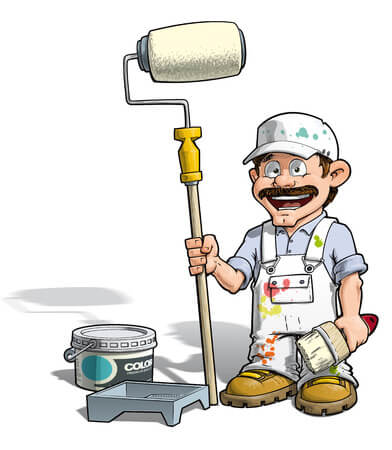Interior Painting Dublin
Top Tips For Interior Painting Walls.
To prevent most of the frustrations that can come with painting new interior walls, comply with these basic rules for surface prep work, primer application and top-coat application when doing interior painting.
Surface Area Preparation
Wall and ceiling surface areas should be completely dry prior to primer or paint is used.
Use a soggy cloth to remove loose dust and dirt produced during the drywall installation.
If the drywall surface area is wet, dusty or dirty, the paint may not blend, bond and flatten as it must.
Make sure the ambient temperature level isn't too low for painting. Cold temperatures interfere with paint's ability to integrate and bond; when it's too cold, the polymer bonded particles don't have adequate energy to move collectively.
The air, the surface and the paint ought to all be at the manufacturer's recommended temperature, which is normally above 40 degrees Fahrenheit.
Also, verify that the temperature won't fall below advised levels after painting for the time framework specified by the manufacturer.
Primer
When priming drywall, the target is to create a surface with uniform suction (absorption).
The areas where joint composite has been applied don't soak up primer as quickly as the papered surfaces, and the outcome is a flatter finish in paper areas than in areas of joint compound.
To fix this problem, primer has a lower solid content, which makes it less sensitive to the differing suction rates of various surfaces.
In primer, the polymer particles merge and connect more quickly than they do in paint, regardless of the surface area they're applied to.
Keep in mind that drywall primer doesn't hide flaws and isn't nearly as long lasting as paint. Its functionality is to generate an even surface for paint by leveling out suction rates across the drywall surface.
Primer is the first coat of paint applied to the surface.
It functions as an intermediary between the drywall and the top coat. A really good primer seals the drywall to offer a more uniform surface for painting.
Think about primer as the groundwork for a smooth, attractive interior paint job.
Top Coat
The top coat is the last coat of paint applied to the surface area.
You may well need to run the paint through a filter system to remove dust and dirt from site work.
Whisk the paint and apply the manufacturer's advised thickness of wet top coat, back-roll the paint and gauge the mil thickness to ensure the accurate dry-paint thickness.
Back-rolling can improve the uniformity of the paint coating.
Depending upon the paint equipment selected, administering two lighter top coats can supply a higher-quality and more resilient finish than applying one heavy topcoat, which in turn can run.
There you go!!
Use these tips and start your Interior Painting Project Today!
Preferably Get The Professionals To Do It!
Ring Us Today For A Fast And Friendly Quote!
Tap Number To Call [phone]
Professional Painters & Decorators Services

Professional Painter & Decorators Locations
